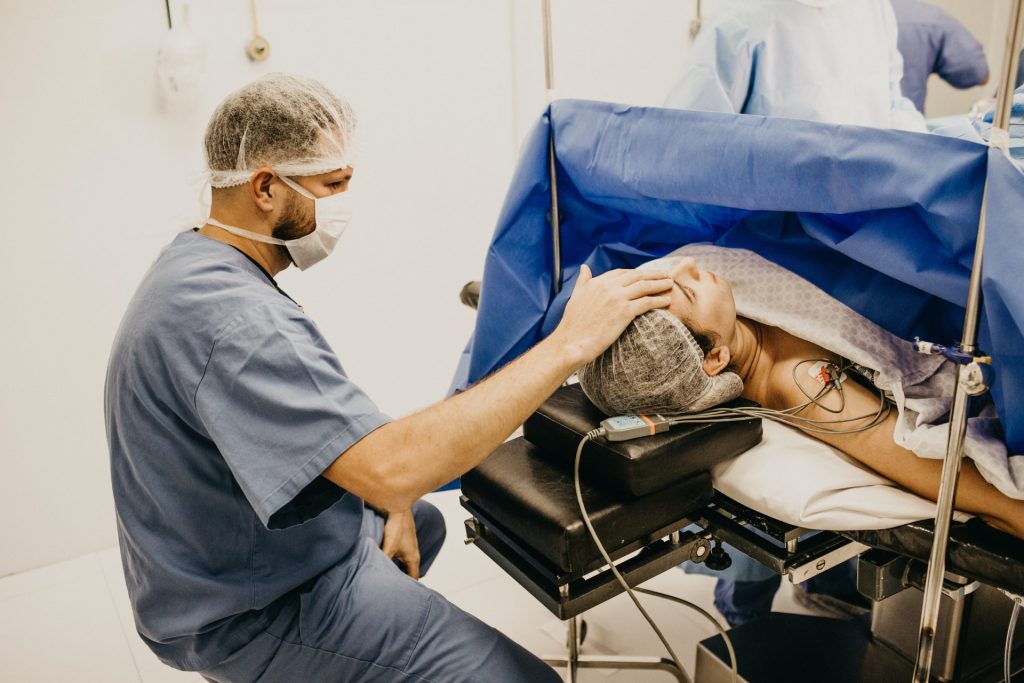Having the Choice of Birth Position is Key in Satisfaction of Expectant Mothers

Whether supine, all-fours position, sitting upright or squatting – women adopt different birthing positions during childbirth. But until now, how the final birthing position affects the satisfaction of the woman giving birth had not been known. Researchers in Germany investigated the relationship. In particular, they also took into account whether the choice of birthing position was voluntary. The results, which appear in Archives of Gynecology and Obstetrics, showed that having the choice counted the most for mothers’ satisfaction.
Around three quarters of those surveyed were lying during the birth and were particularly dissatisfied if they felt that they had not made this choice themselves. But if the expectant mothers had chosen the supine or lateral supine position themselves, the position actually tended to make them more satisfied.
For a long time, the supine position was the most common birth position in Western countries, giving obstetricians unhindered access to the woman and child. In various cultures, however, upright birthing positions, such as sitting or squatting, are also widespread. Which position is best for expectant mothers and the unborn child is controversial in the literature.
“Until today, international guidelines usually only recommend that women should adopt their preferred birthing position,” explains Prof Dr Nadine Scholten, professor in psychosomatic and psycho-oncological health services research at the University of Bonn. With regard to birthing positions, the German guideline also states that women should adopt the position that seems most comfortable to them. However, they should also be encouraged to adopt an upright position in the final phase of birth.
“In reality, whether they ultimately lie, sit or squat depends on the wishes of the expectant mothers themselves, but also on the suggestions of the midwives, obstetricians and sometimes necessary medical measures,” explains Prof Dr Brigitte Strizek, Director of the Clinic for Obstetrics and Prenatal Medicine at the University Hospital Bonn (UKB).
Focus on women’s satisfaction
A team led by Prof Scholten, who carried out the study at the Institute for Medical Sociology, Health Services Research and Rehabilitation Research (IMVR) at the University of Cologne and the UKB, wanted to find out which birthing position women were most satisfied with afterwards. Almost 800 mothers were asked about their final birthing position and how satisfied they were with the birth overall using an anonymous questionnaire. All of the data analysed here was from women who had given birth vaginally in a hospital without the use of a vacuum extraction or forceps, and who had given birth eight to twelve months previously at the time of the survey. In their study, the researchers also asked about the satisfaction of the mothers – depending on whether the birth position was freely chosen or not. The reasons for not choosing a free position were also asked.
It was found that over three quarters of mothers gave birth to their child lying on their side or on their back. Of these women, up to 40% stated that they had not chosen the birth position voluntarily. “The most common reason given by respondents was instructions from medical staff,” explains Prof Scholten, first and corresponding author. The most common position assigned by obstetricians was the supine position. It was striking that women were more satisfied with their birth if they were allowed to choose the position voluntarily – especially if they chose the supine position themselves. Women who were not free to choose their birthing position were particularly dissatisfied if the medical staff specified this and not the CTG to record the heart rate of the unborn child and labour activity or the epidural, the anaesthetic to relieve pain, prevented the desired position.
Self-determination not always given in the delivery room
“The number of women who did not choose the birth position themselves is particularly striking, as is the associated lower level of satisfaction with the birth,” summarises co-author Prof Strizek. However, the team cannot confirm whether an increased voluntary choice of birth position in the future would result in fewer women giving birth in the supine position. “In order to increase women’s subjective satisfaction with their birth experience, they should be given the opportunity to adopt their preferred position,” appeals lead author Prof Scholten. “The first step is to increase the awareness of medical staff and empower women to understand and better communicate their preferences.”
Prof Strizek adds: “If a certain position would be advantageous for the woman giving birth from a medical point of view, we as obstetric teams need to explain this better to the women so that they rarely have the feeling that they have not determined the birth position themselves.”
Source: Universitatsklinikum Bonn



